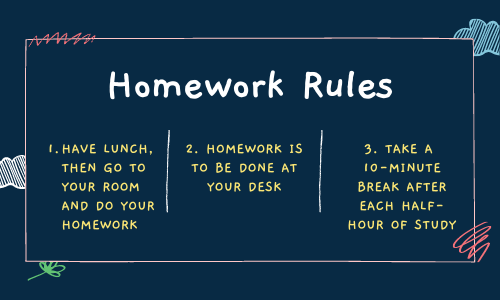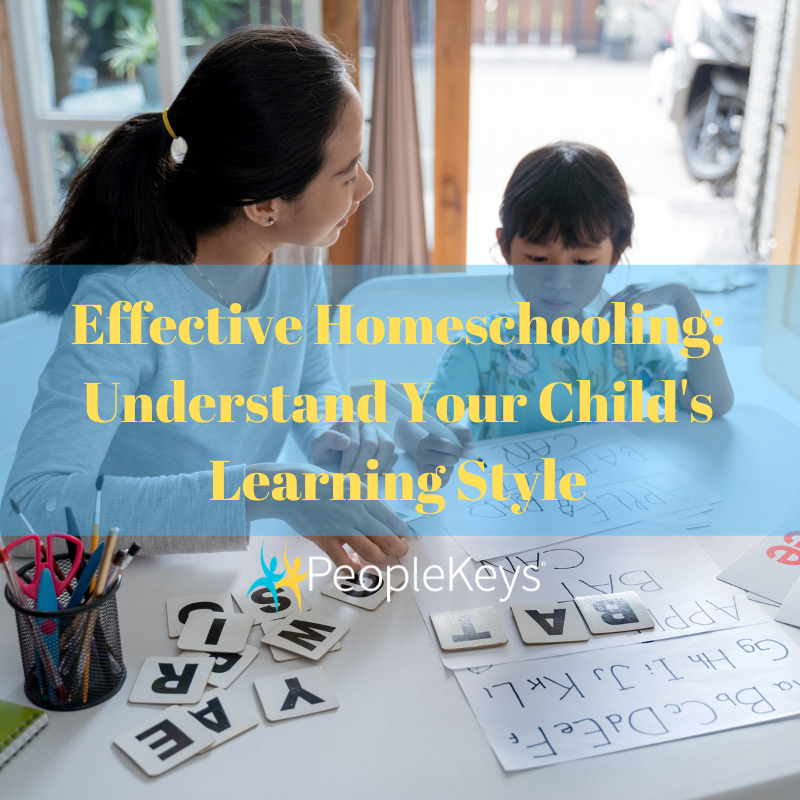Effective Homeschooling: Understand Your Child's Learning Style
How different has the concept of learning become in our “new norm” society?
“I can’t talk now. I’m homeschooling the boys!”
When I got this reply from my son, whom I had been trying to speak to on the phone for days, it set me reminiscing about the old days.
When my children were young, homework was done in each child’s bedroom while sitting at their desks. As a “D” personality style mom, I expected them to get on with their homework and find the answers for themselves. After all, they were equipped with the original “Google,” otherwise known as “The World Book Encyclopedia,” which covered significant areas of knowledge in the 22 volumes, as well as a Dictionary and an Atlas. What more did they need? They required some personal attention occasionally, which came more from Dad, an S/C DISC style blend - family first, caring, and very good at all things mathematical and scientific; in short, academic.
The rules were set out very clearly by me, the Authoritarian mom. The last rule, however, ended up being a joke on me.

Homework Rules
- Have lunch, then go to your room and do your homework
- Homework is to be done at your desk
- Take a 10-minute break after each half-hour of study
My eldest son, an SC style blend, adhered to the rules, while my youngest son, an SCI (a false “D”) combination, would work for 10 minutes and have a half-hour break.
“But,” you might be thinking, “looking at their styles, it appears that they would be very similar.” This is the amazing part of DISC behavioral profiling. How different and unique each profile is to a person depends on where the plotting points are on their DISC graphs. The addition of a 3rd style above the midline also changes the behavior of an individual. The addition of the “I” type in my youngest son meant he needed to have a different environment to study that included time to communicate with someone.
The way he did this was to come and tell me something about what he had just learned, no matter where I was or what I was doing. I had to learn to stop doing and just listen. I really had to practice listening. This trait does not come that easily to a high D/I style blend. His need to tell me what he had learned was also due to his learning style - visual and auditory. As he repeated what he had learned to me, he was also revising the homework by speaking it out loud. My eldest son’s learning style is visual and kinaesthetic. He would write down what he learned, and this was his way of revision.
If only I had this insight right from the beginning regarding the unique styles of my children.
I now understand why they did what they did.
Homeschooling need not be a nightmare, as described by a parent recently: “It’s a nightmare. We are stressed enough as it is by trying to work from home as well. I can’t believe I’m still married!”
Remember, a child is also feeling stressed. They are used to being in a classroom with visuals, classmates, and a teacher who is there to teach without other responsibilities and disruptions. We can make learning at home organized and painless by understanding ourselves as parents and our children. Just because we learned in a particular way does not equate to it being the best way for our child.
How can we change all of this? By assessing not only ourselves but also our children to understand how we all “tick.” The DISC profile provides us with an understanding of our strengths, limitations, communication style, and so much more.
Then there is the Learning Style assessment, which is paramount for all of us in this situation, not only for our children but also for ourselves. One size does not fit all. Thank goodness we are all different. Let’s enjoy the differences and learn from each other!
There are three distinctive Learning Styles:
- Auditory (hearing)
- Visual (seeing)
- Kinaesthetic (touch)
These three styles equate to how we best receive messages and retain the information given to us.
How do you like to receive messages?
My daughter gets annoyed when I send her a text message. “Mom,” she says, “if you want to tell me something, talk to me.” Yes, you guessed it, she is an Auditory learner.
I too am an Auditory learner. When I take a course, I always make sure I have equipment that will allow me to listen to a course leader rather than read a manual. My favorite time to study is when I am driving. My secondary learning style is Visual. When I need to recall a section or write an exam, I can visualize where I heard the information and immediately hear the spoken words in my head. In every report that my parents received while I was in school, the teachers wrote, “Liz is a dreamer.” They did not realize that I was listening to what they were saying while seeing the sights around me to help me learn. In one instance in Senior School, I was the only student who knew the answer to a particular question in an exam. All the other students were very verbal in saying that the question was not fair as that information was not in their workbooks.
“No,” said the teacher, “but I did tell you about it in class.”
The Learning Style Assessment helps you identify your favorite sense of perceiving information.
A while ago, I was approached by a parent concerned with the poor results her son was receiving at school. In our first student coaching session, I gave him a DISC Profile and a Learning Style Profile. He had a high Kinaesthetic Learning Style, which meant he learned best when touching or being physically involved with what he was studying. I had a coaching session with both him and his Mom to go through the reports and the list of how he learns best. He immediately became animated and was excited to be able to do these things while studying.
On subsequent sessions with him, he said that he enjoyed studying and his marks increased in leaps and bounds. A pleased mom and son! Dare I add here that he also started to chew gum while he studied at home (which is not one of the suggestions in the reports, just a “by the way”). His mother mentioned this to the teacher, and amazingly she agreed that he should try this in her class. It worked for him, and that is what is important. His parents had given the Educator these reports, and I was soon asked to help other students in his class as well.
Understanding how you learn and how your child learns is the beginning of a better homeschooling experience and improving your relationship. Children need to be understood. With all this information comes understanding, and with understanding comes wisdom, which leads to less stress and a calm atmosphere.









